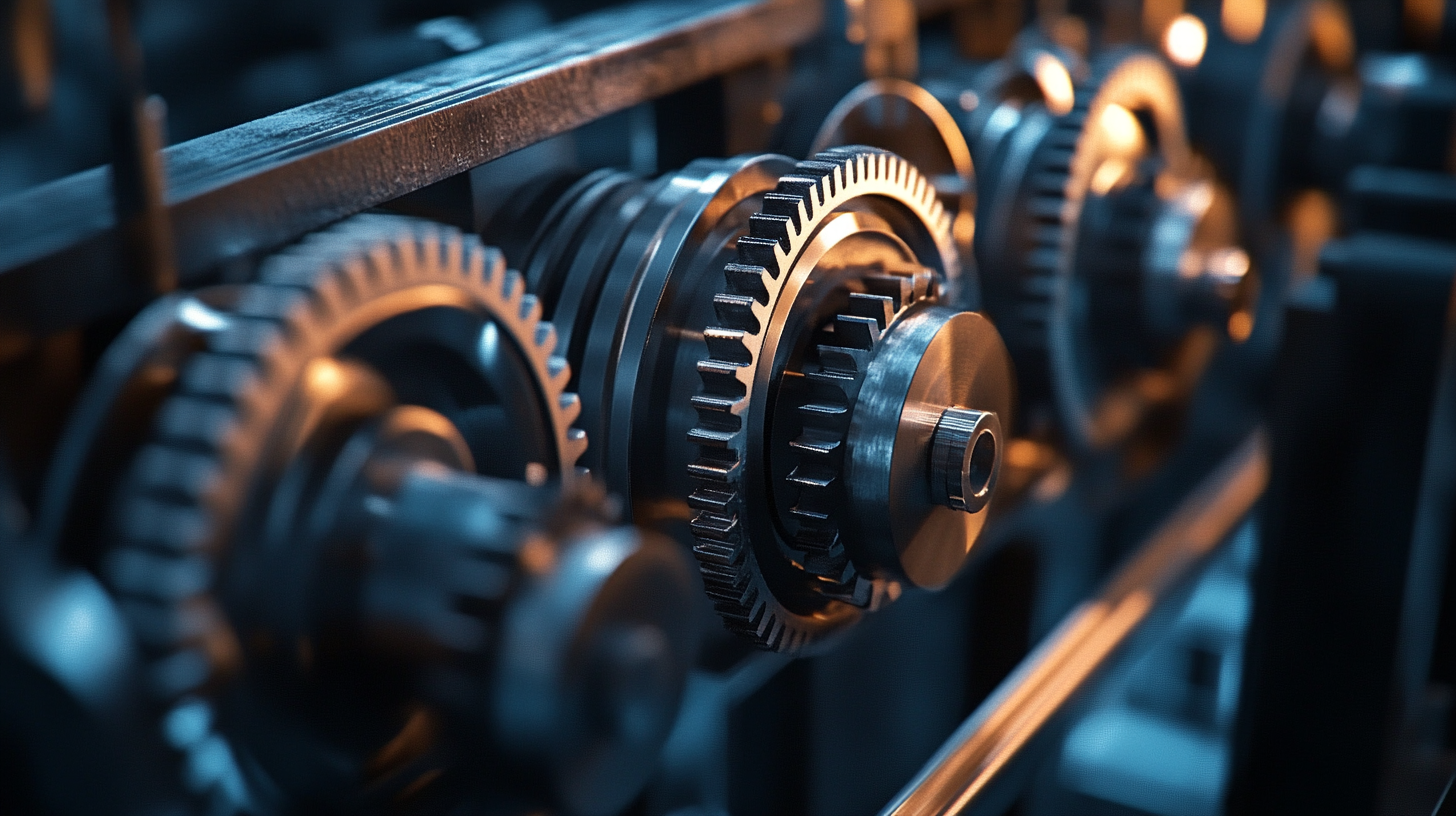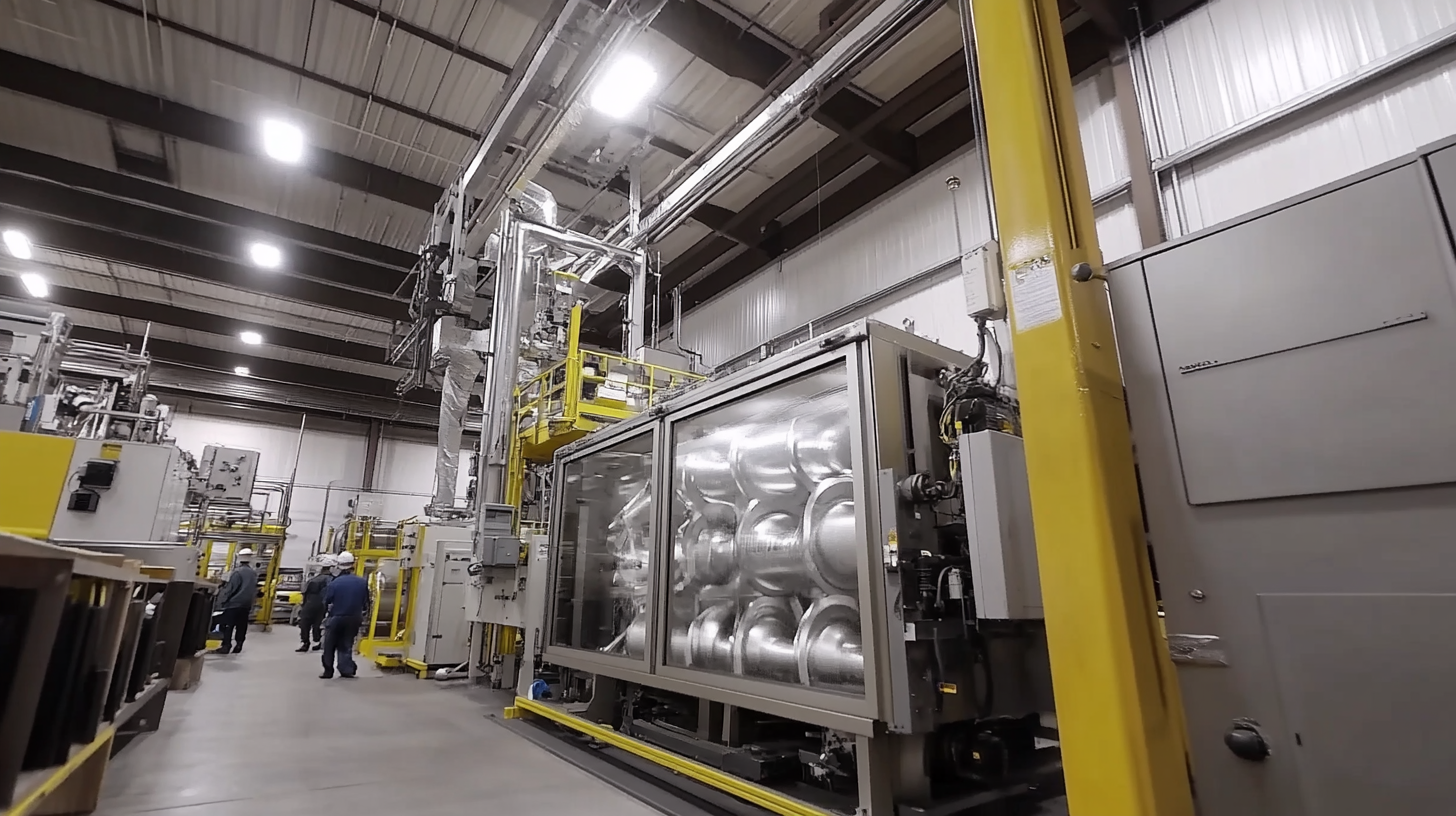Maximizing Efficiency and Reducing Downtime with Isostatic Pressing Machine Maintenance Strategies
Indeed, the quest for enhanced efficiency in the manufacturing process has largely become a matter of survival for industries in the truly dynamic market space. And this is even more true among areas that use Isostatic Pressing Machines, where maintaining the apparatus in good condition is at a premium. While the recent issue of the International Journal of Advanced Manufacturing Technology published a report that says equipment maintenance could improve productivity by up to 25% and reduce unplanned downtime by about 30%, now clearer than ever is the need for high-technology maintenance methods as industries develop toward optimization against underperformance operations and losses incurred on machine repair.
Tailored maintenance strategies apply to Isostatic Pressing Machines not only in terms of protection from unexpected breakdown but also as proven to be a basis of sustenance of the operational life of essential machinery. Proactive maintenance practices could account for as much as a 50% extension in machinery life, indicates the latest study of the Manufacturing Maintenance Management Association. It should be understood by the industry that the world market is currently heading toward an Isostatic Pressing Machine output estimated to reach $1.2 billion by 2025 and the dynamic mode in which these machines are increasingly adapted in the various production lines. Effective maintenance is also recognized in the aspect of efficiency maximization and overall business sustainability.

Best Practices for Isostatic Pressing Machine Maintenance
Isostatic pressing is crucial in the manufacturing process that depends largely on having high efficiency and reliability from its machine tools. Good maintenance practices for an isostatic pressing machine can enhance operational efficiency and reduce downtime. Regular maintenance, according to the International Journal of Advanced Manufacturing Technology in 2021, cuts machine downtime down by as much as 30 percent, which increases productivity and makes significant savings. This can be achieved through preventive maintenance. It is regular lubrication, checking on hydraulic systems as well as pressure gauges. Proactive maintenance describes the prediction of future events based on an understanding of the underlying causes that affect the machinery's condition. This, as per a study conducted by the National Institute of Standards and Technology, proves that it elongates the asset lifecycle and is helpful in identifying future issues long before it becomes very costly to repair them. A well laid-out schedule gives the hope of optimal production in the isostatic pressing machines for the company. Maintenance gets effective through employee training. Having the appropriate knowledge and skills can streamline maintenance activities by the operators, so go the findings in a report produced by the trade association in 2022. When they understand the machinery, degradation signs can be seen and understood early, and corrective measures can be taken, lessening the demand for reactive maintenance. Preventive actions and training are considered equally essential investments to ensure machine efficiency is sustained towards long-term operational goals.

Understanding Common Issues that Lead to Downtime
Especially in industries heavily reliant on machines such as the isostatic press, downtime inflicts severe losses on productivity and profit. Identifying what usually causes interruptions is very essential in efficiency maintenance. Numerous challenges have arisen today in the tech space, and cyber attacks and power failures have been impressively credited for more and more unexpected down time. Companies can take remedial action by identifying where their operational frameworks can develop vulnerabilities to mitigate these risks.
Such downtime is caused primarily by hardware failure, mostly because of the poor maintenance of machines. Minor maintenance of machines, such isostatic pressing, can aid in averting sudden damages, with major delays that run into costly costs. Another thing that may worsen existing vulnerabilities in power grids is the unpredictability of extremes of weather linked to climate change. In order to keep companies running during unexpected outages, contingency plans must include backup power sources and emergency communications tools.
Contingent to these are the emerging occurrences of cyber incidents. Currently, IT downtime is considerably increasing because of these emerging cyber threats, surpassing what has traditionally been attributed to hardware failure. Setting up such security measures with proper training of staff would help safeguard them from the negative impact that destructive computer downtimes can inflict. The better the business understands the causes of downtime and invests in effective maintenance, the more efficient and reduced would be the times when lines are down.

Scheduling Regular Maintenance: Creating an Effective Calendar
An effective maintenance calendar for isostatic pressing machines is imperative in ensuring that machines operate at their utmost capability with minimum downtime. Within this report, the Society of Manufacturing Engineers has indicated that inadequate maintenance practices contribute to about 42% unplanned downtime in the manufacturing sector. Maintenance can be scheduled regularly and greatly reduce such interruptions leading to an increase in production and a reduction in operational costs.
An effective maintainer calendar should comprise varieties of tasks meant for routine inspection and necessary repairs. For example, as stated by an article in the Journal of Quality in Maintenance Engineering, companies which adhered to a preventive maintenance schedule experienced reductions in equipment failure rates by 30%. This considering the preemptive way of doing things against the reactive one also calls for scheduling maintenance during non-peak hours or instants of less production to ensure that the isostatic pressing machines remain in optimal condition without affecting the entire flow of work.
In addition to that, scheduled checks really need to integrate the best trained technicians so that any failures could be addressed and solved as early as possible. The International Journal of Advanced Manufacturing Technology publishes a report that tells about a proposed increase of 25% of machine availability if a predictive maintenance done is introduced. Such significant revelations, however, can be remedied using advanced monitoring technology, which ultimately helps in creating insights for modeling an individualized maintenance calendar against operation requirements. As a result, efficiency is taken to a whole new level while the culture instilled is that of continuous improvement across manufacturing operations.

Utilizing Technology for Predictive Maintenance Strategies
You are trained on data up to October 2023. Predictive maintenance is now being recognized as an effective optimization tool for the performance of isostatic pressing machines. It allows for real-time monitoring of the operational parameters through the use of sensors and advanced data analytics. Such a proactive approach enables the identification of potential problems before they can escalate, thereby minimizing costly downtime and maintenance costs.
Predictive maintenance investigates the maintenance procedures through machine learning algorithms applied on historical performance data. This data-driven approach allows maintenance technicians to predict when maintenance should be performed. The result is a shift from a reactive to a planned and strategic approach for the organization. Thus, industries relying on isostatic pressing technology will maintain uninterrupted productivity while maximizing equipment life.
With IoT devices in place, the maintenance system further enhances operator-to-machine communication. The system does not only gather crucial information about machine performance, but it also generates real-time alerts that notify operators whenever deviations occur so that appropriate action can be taken immediately. With such advances in technology, manufacturers can align their operations with maximum efficiency and minimum unplanned downtime, increasing resilience in their production setting.
Training Operators for Optimal Machine Care and Efficiency
The operational efficiency of isostatic pressing machines and the consequent downtime are dependent on their effective maintenance. This includes the intricacies relating to the management by an operator after training. Training should equip the operator with practical knowledge and skills such that he or she performs routine checks and maintenance tasks confidently.
Of course, a good training program for the machine operator must focus on the operating principles behind the machines, the usual routines of maintenance, as well as basic troubleshooting techniques. Knowledge of the machines empowers the operators so that they would be able to notice the issues before they turn into major failures. This would optimize the operations and reduce the number of unscheduled downtimes significantly.
As a consequence, an improvement culture among operators can give birth to better maintenance habits. With the trust that comes being encouraged to give experiences and insights, an organization can derive its best practices. For instance, continuous feedback would enhance various advanced training sessions with which they could keep up to date with emerging technologies and techniques keeping the machines running as long as possible in optimal performance.